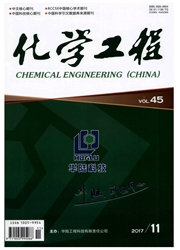

 中文摘要:
中文摘要:
利用Aspen Plus软件对生物质二氧化碳气化流程进行了严格稳态模拟,模拟结果与实验数据吻合良好。在此模型基础上分别研究了CO2-O2,H2O-CO2和H2O-CO2-O23种组合气化剂的工艺特性,通过调节温度、氧气当量比、CO2/C(摩尔比)和H2O/C(摩尔比)4个影响生物质气化的参数,分析气体产率和冷煤气效率变化规律,从而获得最优流程优化参数。研究结果表明:随着温度升高,气体产率和冷煤气效率升高,1 000℃以后趋于平稳;随着氧气的增加气体产率和冷煤气效率降低,较低的混合气当量比下产生的合成气较为理想;二氧化碳增加,一氧化碳的产率和冷煤气效率大幅提高,氢气的产率几乎不变;随着水蒸汽的比例增加,氢气产率增加,一氧化碳和甲烷减少,冷煤气效率先减少再增加,并在0.1到0.15之间有最小值。
 英文摘要:
英文摘要:
The rigorous steady-state simulations of biomass CO2 gasification flowsheet were implemented by means of commercial software Aspen Plus. The simulation results agreed well with the experimental data. Based on the validated model, the performance of three combinations of gasifying agents (CO2-O2, H20-CO2 and H2O-CO2-O2 ) was studied and analyzed. The gas yield, cold gas efficiency and carbon conversion of each simulation were calculated when they were respectively in different temperature, oxygen equivalence ratio (ER) , CO2/C and n20/ C in order to capture the optimal parameters of the system. The simulation results reveal that the gas yield and the cold gas efficiency increase cold gas efficiency generally gasifying; adding more CO2 with the increase of temperature and then level off around 1 000 ~C ; the gas yield and decrease with the increase of 02 concentration, so a relatively lower ER is better for in the feed, more CO is produced and the cold gas efficiency increases, while the gas yield of H2 is almost unchanged ; the gas yield of H2 increases and the gas yield of CO and CH4 gradually decreases with the increase of H2 0 consumption, and the cold gas efficiency firstly goes down and then goes up, having a minimum value between 0.1 and 0.15.
 同期刊论文项目
同期刊论文项目
 同项目期刊论文
同项目期刊论文
 期刊信息
期刊信息
